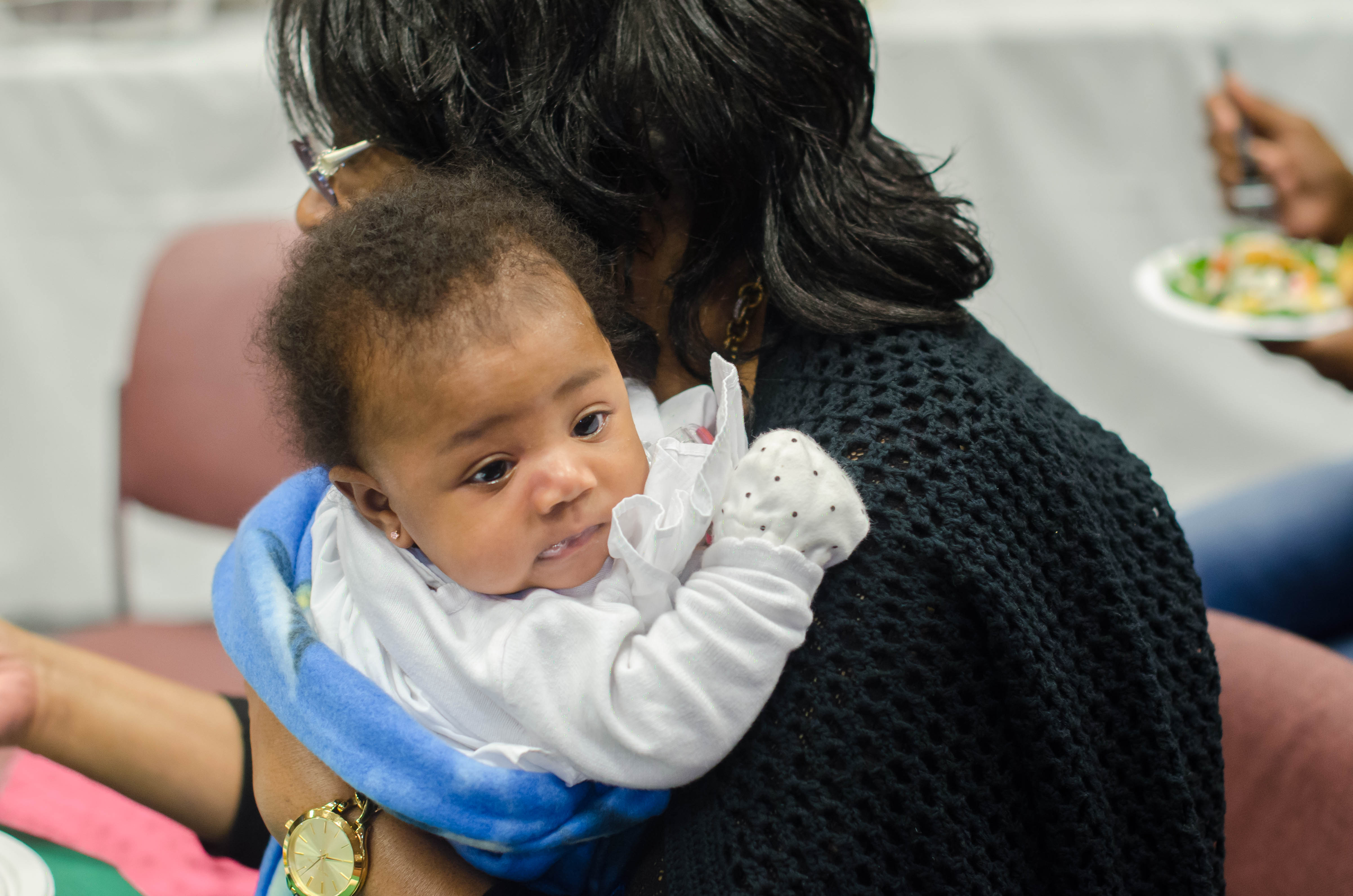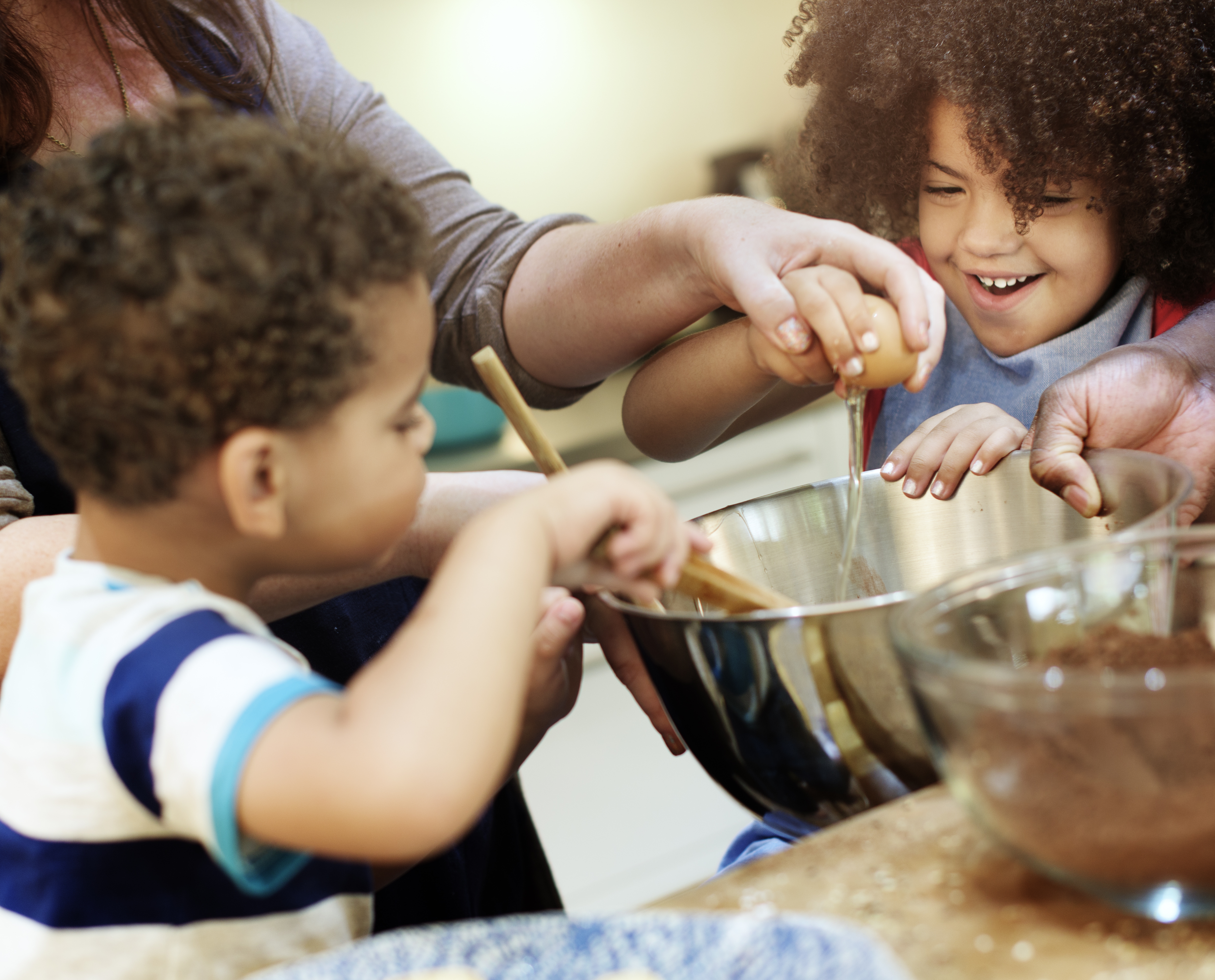
Cooking Skills by Age: Pregnancy - 5 Years
Pregnancy-6 months: Preparing Baby's Palate
Humans eat and have the ability to taste food before they're born. Exposing new moms and newborns to new flavors and teaching cooking skills are critical to raising a healthy kid.
- Kimberly Young, Founder Healthy Little Cooks
While babies aren't actively involved in cooking, there are ways to influence their food preferences early. Research shows that introducing a wide variety of flavors during pregnancy and breastfeeding can help babies become more adventurous eaters, even before birth.
A baby’s taste buds begin developing around 8 weeks gestation, and studies show that the amniotic fluid surrounding the baby carries flavors from the mother's meals. Exposing babies to diverse flavors while in the womb and during breastfeeding can help them accept a wider variety of foods later in life.
For example, a study by the Monell Chemical Senses Center found that babies whose mothers consumed carrot juice during pregnancy or while breastfeeding were more likely to enjoy carrots when introduced to solid foods. Spices and herbs like garlic, cinnamon, or even mild curry can be transferred through breast milk, introducing a baby to new tastes.
What Mothers Can Do To Encourage Future Eaters:
Eat a variety of vegetables, herbs, and spices like garlic, ginger, cinnamon, carrots, squash, avocados, peppers, etc.
Eat foods with strong flavors like mild curry, cumin.
Vary your protein sources (e.g., fish, lentils, eggs) for a rich range of tastes.
Include bitter greens such as kale and arugula to help babies experience less common flavors.
Drink water and hydrate to support milk production and healthy eating habits later.
Avoid processed, sugary foods to limit overexposure to sweet flavors.
Choose naturally sweet fruits like grapes, berries, and melons.
Stay active to promote overall health, which influences a child’s eating habits.
Practice mindful eating to develop your own appreciation for flavors, and how your body responds to different foods and nutrition.
Practice eating a diverse diet while breastfeeding to encourage palate development.
Key Goals & Takeaways:
Expose your baby to a variety of flavors via your diet.
Avoid overly sugary and processed foods.
Help babies develop a natural curiosity for food through early flavor exposure.

7-12 Months – Early Solids and Exploration
At this stage, babies are introduced to their first solid foods while still getting most of their nutrition from breast milk or formula. This is when they begin to develop preferences for different flavors and textures.
What Babies Can Do:
Taste soft purees—babies can try smooth fruits and vegetables (e.g., pureed carrots, sweet potatoes).
Hold soft finger foods like small pieces of banana or avocado.
Explore different textures—they can begin to feel the difference between smooth and chunky foods.
Show preferences for certain flavors, textures, or foods (though these may change).
Practice self-feeding by picking up small, soft foods with their hands.
Mimic chewing motions even if they don’t have many teeth yet.
Show curiosity toward food—they may start reaching for the spoon or food during meals.
React to strong flavors like garlic or mild herbs (interest or rejection may vary).
Use facial expressions to communicate their likes and dislikes with new flavors.
Drink water from a small cup with assistance, beginning the transition from bottles.
Skills:
Developing basic motor skills to hold and handle food.
Exploring the sensory experience of food (touching, tasting, smelling).
Reacting to and identifying new flavors and textures.
Beginning self-feeding with soft foods.
Communicating likes and dislikes through expressions and body language.
Goals:
Encourage the exploration of a wide variety of flavors, textures, and food types.
Build their motor skills by offering easy-to-handle foods for self-feeding.
Create a positive and stress-free environment to make mealtime enjoyable.
How You know When They Are Ready to Move to the Next Step:
They can pick up small pieces of food and bring them to their mouth.
They show interest in feeding themselves by reaching for food or the spoon.
They begin to chew or gum food, preparing for more textured meals.

13 Months – 2 Years – Developing Independence
During this period, toddlers are becoming more independent with their eating habits and food preferences. They are developing fine motor skills and transitioning to more solid foods with varying textures.
What They Can Do:
Feed themselves with finger foods like cooked vegetables, soft fruits, and small pieces of bread.
Drink from a sippy cup or practice drinking from an open cup with help.
Use a spoon with assistance—they can start learning how to scoop food.
Explore more textures such as soft-cooked grains, mashed beans, or scrambled eggs.
Show preferences for certain foods and begin to assert them (e.g., rejecting or favoring certain tastes).
Imitate eating behaviors—they may copy how adults or older children eat.
Chew small pieces of soft food—they are gaining better control of their chewing ability.
Begin using simple words or gestures to express hunger or fullness.
Help clean up by handing over a plate or wiping their hands.
Show interest in using utensils (fork or spoon) and try to use them, even if messily.
Skills:
Improved hand-eye coordination for feeding themselves.
Fine motor development through grasping and manipulating small foods.
Building communication skills by expressing food preferences.
Learning basic utensil use for more independent eating.
Exploring a wider range of textures, including more solid foods.
Goals:
Encourage self-feeding by offering a variety of finger foods and letting them try using utensils.
Expose them to a wide range of textures and flavors to help them become more adventurous eaters.
Foster independence while maintaining a positive, low-pressure mealtime experience.
How You know When They Are Ready to Move to the Next Step:
They consistently feed themselves with minimal assistance.
They can use a spoon or fork with moderate success.
They show curiosity and interest in trying new foods, even if they don’t like them at first.
Humans eat and have the ability to taste food before they're born. Exposing new moms, newborns and kids to new flavors and teaching food survival skills is critical to our health. - Kimberly Young, Founder Healthy Little Cooks
2-3 Year Olds: High Supervision and Sensory Play
Toddlers begin to develop curiosity about food, and their fine motor skills are growing, making this the perfect age to introduce them to simple tasks. At this stage, the focus is on familiarizing them with food textures, smells, and simple hand movements.
What They Can Do:
Wash fruits and vegetables (supervised).
Tear soft greens or herbs (e.g., spinach, basil).
Stir ingredients in a large bowl.
Pour pre-measured ingredients into bowls or pots.
Taste small amounts of new foods.
Help press buttons on kitchen gadgets (e.g., blender with supervision).
Use plastic spoons to scoop soft items (e.g., yogurt, mashed potatoes).
Sort food by color or size (e.g., sorting berries, carrots).
Help mix dry ingredients in a large bowl.
Add toppings like sprinkles or small fruits to a dish.
Skills:
Hand-eye coordination (pouring, stirring).
Sensory exploration (texture, taste, and smell).
Basic kitchen tool recognition (spoons, bowls).
Developing patience through small tasks.
Goals:
Familiarize them with different textures and flavors.
Increase their comfort level with kitchen tasks.
Encourage interest in food by involving them in simple, fun tasks.
How You know When They Are Ready to Move to the Next Step:
They can follow simple 1-step instructions (e.g., “pour the flour”).
They show curiosity about food or kitchen activities.
They are patient enough to wait for their turn or task.
4-5 Year Olds: Building Independence with Simple Tasks
As preschoolers, kids begin to develop more coordination and focus. At this age, they can follow simple multi-step instructions and handle slightly more complex tasks.
What They Can Do:
Measure out ingredients (with help).
Use child-safe knives to cut soft foods (e.g., bananas, strawberries).
Crack eggs (with supervision).
Mash ingredients (e.g., potatoes, avocados).
Help make sandwiches or wraps by layering ingredients.
Mix batters for pancakes, muffins, or cakes.
Roll out dough (e.g., for cookies, pizza).
Use cookie cutters to shape dough.
Use tongs to move items (e.g., placing veggies on a tray).
Help set the table for meals.
Skills:
Fine motor skills for cutting and stirring.
Following simple, multi-step instructions.
Understanding measurement basics.
Working with soft kitchen tools safely (e.g., plastic knives, tongs).
Goals:
Encourage more independence through repetitive tasks.
Help them develop focus and patience in the kitchen.
Reinforce basic safety and hygiene practices (e.g., washing hands before cooking).
How You know When They Are Ready to Move to the Next Step:
They can measure and pour ingredients with accuracy.
They show more patience with multi-step processes.
They can handle child-safe tools with limited supervision.